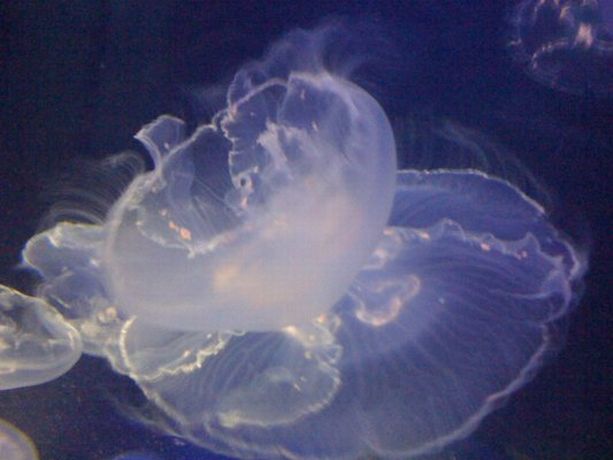
Oahu, Hawaii - 8/9/10 -8/13/10
|
Day 1 |
Day 2 |
Day 3 Quick tour -North shore |
Day 4 |
The Waikiki aquarium
Opened since 1904, the Waikiki Aquarium is the third oldest public aquarium in the United States. It was originally operated as a commercial attraction by the Honolulu Rapid Transit Authority, which saw the facility as a way to entice passengers to ride to the end of the new trolley line in Waikiki. The Aquarium became Hawaii’s first marine field station in 1912 and a part of the University of Hawaii in 1919. Its exhibits, programs and research focus on the aquatic life of Hawaii and the tropical Pacific. The Aquarium houses more than 2,500 animals representing more than 420 species. Here, you can get up-close looks at reef sharks, Hawaiian monk seals, reef fish, rays, jellyfish and many other ocean inhabitants.

|
|
Living coral are living animals that can grow, reproduce and build their own skeletons! |

The Waikiki Aquarium has pioneered efforts to cultivate corals in aquariums. Corals require clean, low-nutrient water, warm temperatures, and bright sunlight, which are easily provided in this outdoor environment. In addition, a 250 gallon (950 liter) surge device creates the necessary strong, turbulent water motion around the corals in the exhibit. By carefully removing branches from large coral colonies and replanting them on special trays we can continually grow new coral colonies, which may grow 8" (20 cm) per year.
|
|
|
Like a display of living jewels, the outdoor giant clam display exhibits a wide range of clam species with an array of iridescent colors. Found throughout the South Pacific, Indian Ocean and Red Sea, there are eight known species of giant clam, yet only one, Tridacna gigas, is a true giant reaching lengths of over three feet and weighing over 500 pounds. While smaller, the other species are extremely colorful owing to their symbiotic algae and pigments in their skin. The unique design of this exhibit allows for uninterrupted viewing of these animals from above and contains over 30 specimens representing five species. All the clams in this display were donated by aquaculture operations; none were taken from the wild.

This
large tank is home for the hunters on the reef. Sharks,
jacks and groupers are among the top predators on coral reefs.
They provide a natural balance that helps keep the reef community healthy and
stable
Other large predators on the reef include jacks and groupers. Jacks or trevally, known locally as “ulua”, are a popular food and game fish. They are the most common predators on Hawaiian reefs. Groupers are among the largest fish residing on coral reefs. The giant groupers in this tank could reach 8 feet (2.44 m) in length and weigh over 800 lbs (363 kg)
|
|
|
|
Tiger shark in the middle of the picture. |
This Frogfish does not move very much! Sometimes he stays still for days, preferring to lie on the bottom and wait for prey to approach. Once the prey is spotted, they can approach slowly using their pectoral and fin to walk along the floor. He looks like a fake fish and you can see his mouth moving to breath but other than that the fish does not move. Pretty amazing and weird. |
 |
 |
Jellyfish are also called The Ocean Drifters and You can see these beautiful animals gracefully pulsate and swim through a large tank

Sting Ray swimming..
|
|
Skeleton of a giant clam |
|
Rickets house's entrance |
|
The Hawaiian monk seal is one of the most critically endangered seal species in the world. Intense conservation efforts by the National Marine Fisheries Service have helped to stabilize the population, but even so, it continues to decline and fewer than 1,300 animals remain.
The Hawaiian monk seal and visitors to Hawaii have something in common. Both are active in the morning and evening, but the rest of the day may be spent lounging on Hawaii's beaches. For the Hawaiian monk seal, this activity pattern may be n important adaptation for survival, allowing them to conserve energy between hunting and foraging trips.
Next....paddle surfing